|
Week
ending: 31st May
Baron's Haugh
On Tuesday I took my macro lens for another walk down the Baron's Haugh
nature reserve. The weather was warm with unbroken sunshine, perfect
for photographing insects, and this blog is a record of the what I
found there on Tuesday’s visit. Along the path to the Marsh hide I found Common Blue and Large Red
Damselflies
flitting gently between leaves by a burn. Along the banks of the River
Clyde near the Centenary hide there were also many Blue-tailed
Damselflies. These are smaller and show greater variety in thorax
colours.
| Common
Blue Damselfly |
Large Red Damselfly |
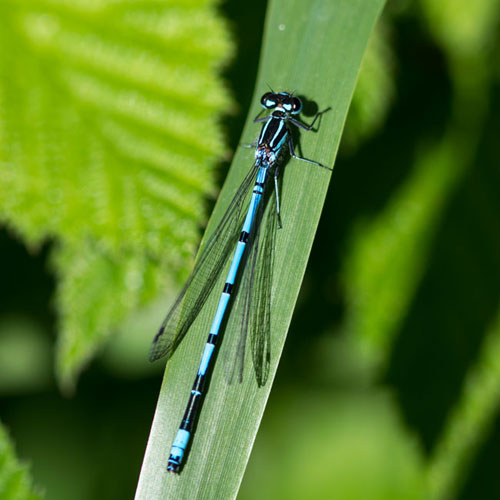 |
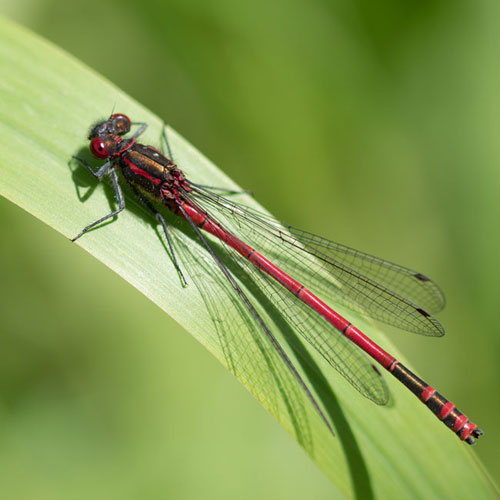 |
I observed more butterflies than
in my previous visit. The Green-veined Butterflies were perhaps most
common, although I saw fair numbers of the Peacock, Small Tortoiseshell
and Orange Tip butterflies.
| Green - veined White Butterfly |
Peacock Butterfly |
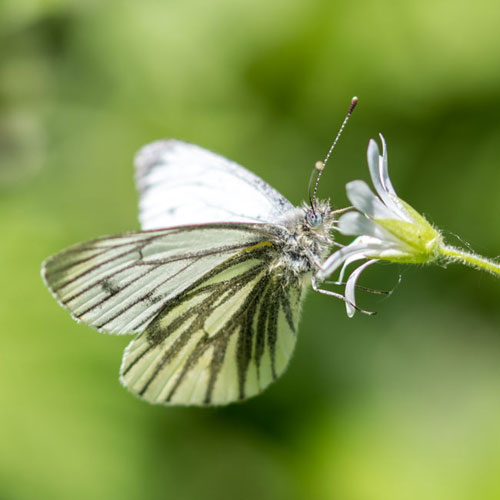 |
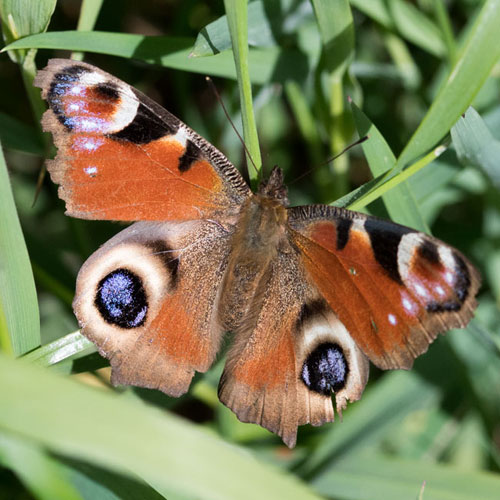 |
| Small
Tortoiseshell Butterfly |
Male Orange
Tip Butterfly |
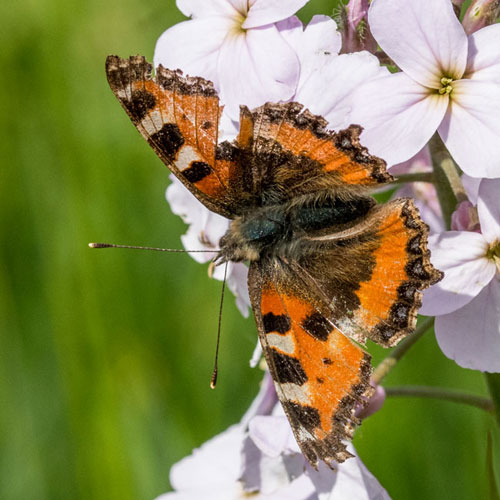 |
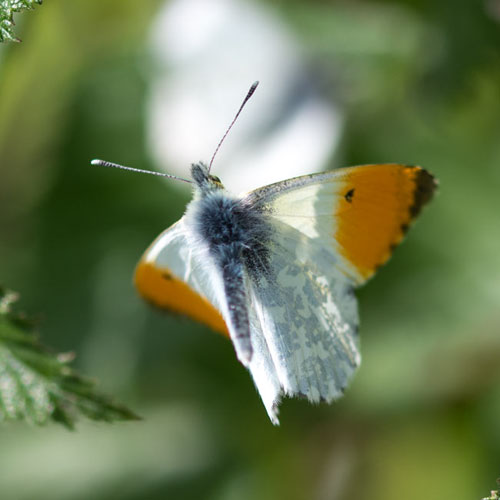 |
I was lucky enough to get close to a pair of mating
Orange Tips. I watched for a few minutes as the male fluttered
acrobatically above the prostrate female before descending to couple
briefly.
Around the reserve there were many large clumps of Common Comfrey with
their drooping, tubular flowers newly in bloom. Around them I noticed
several types of bees -
White-tailed, Tree and Early Bumblebees, and also the much smaller Blue
Mason Bee, all cashing-in in the rich stores of nectar and pollen in
the young flowers.
| White - tailed Bumblebee |
Tree
Bumblebee |
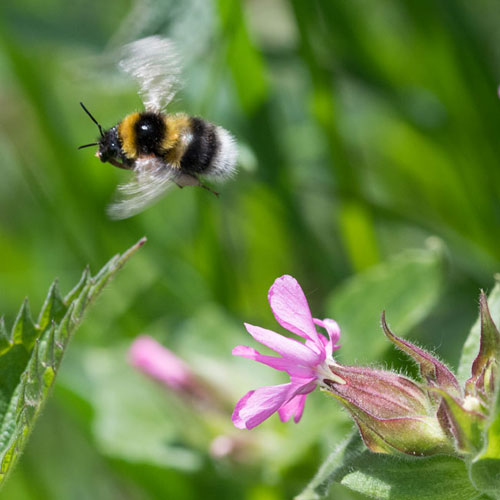 |
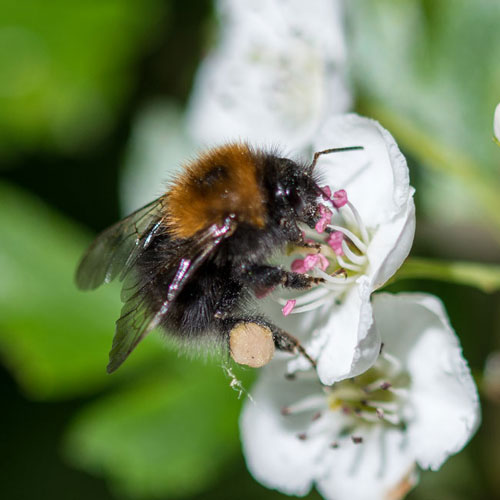 |
| Early
Bumblebee |
Blue Mason Bee |
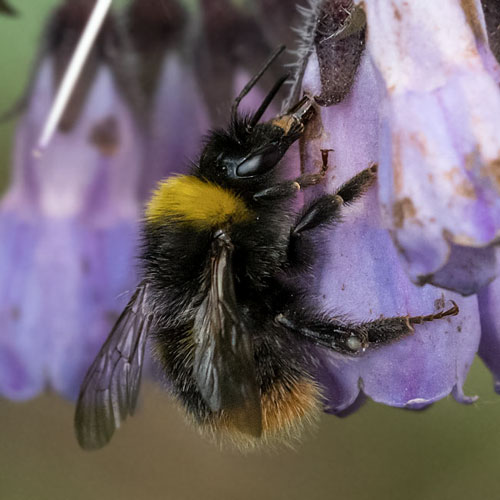 |
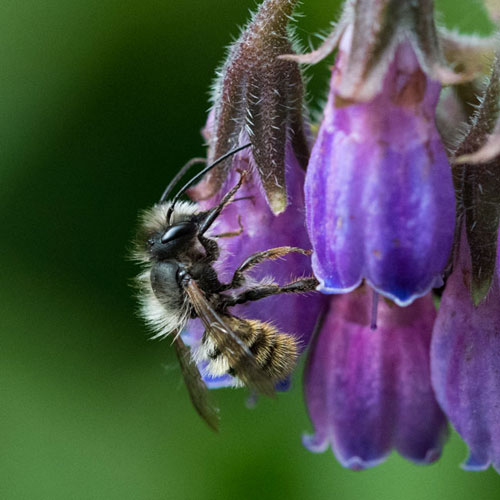 |
Of course, there were also less attractive insects such as the Flesh Fly ,
Brachicoma devia and Muscid or Housefly ,
Muscina prolapsa. Not particularly pretty, but interesting nonetheless.
| Flesh
Fly Brachicoma devia |
Housefly
- Muscina prolapsa |
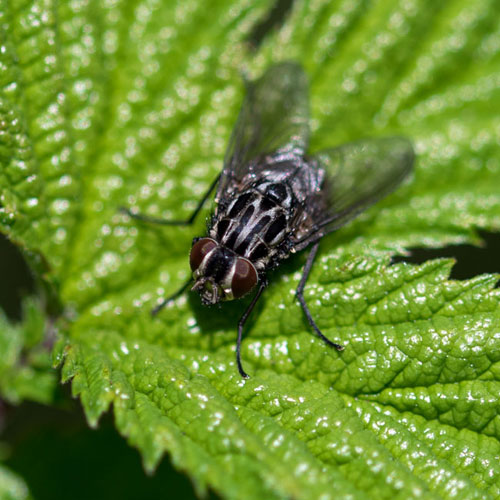 |
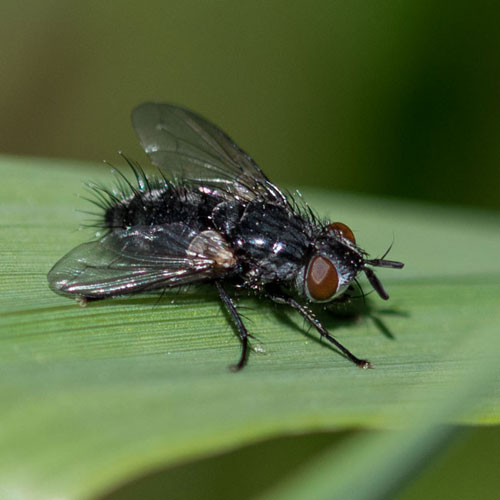 |
There were also hoverflies
hanging in the air and resting on leaves. Bumblebee-mimic Cheilosia
illustrata was amongst the Comfrey flowers, mingling with the bees. The
Grey-backed Snout hoverfly, Rhingia rostrata, was seen in fair numbers
on tall Dames Violet flowers. I snapped the aptly-named Sunfly (although
it is also called the “Footballer” due to its
striped
thorax) on very large Butterbur leaves. A personal favourite is the
Greenbottle, Lucilia caesar. The one shown below was on an Oxeye Daisy,
although they were widespread throughout the site.
| Hoverfly - Cheilosia illustrata |
Hoverfly - Rhingia rostrata |
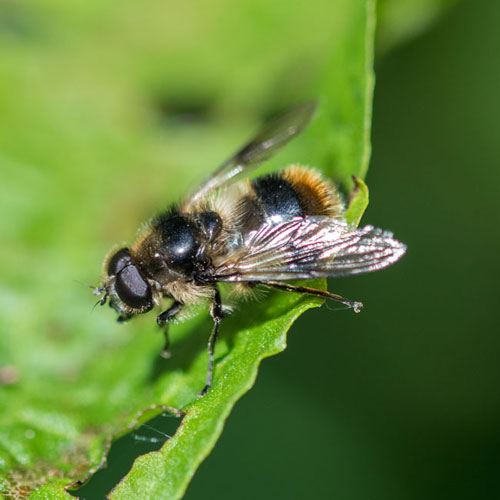 |
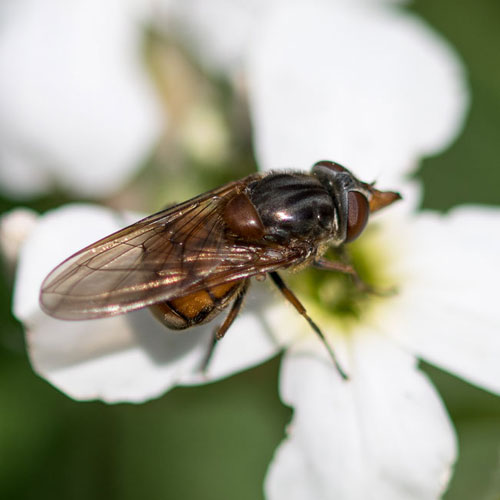 |
Hoverfly - Sunfly
|
Fly - Lucilia caesar |
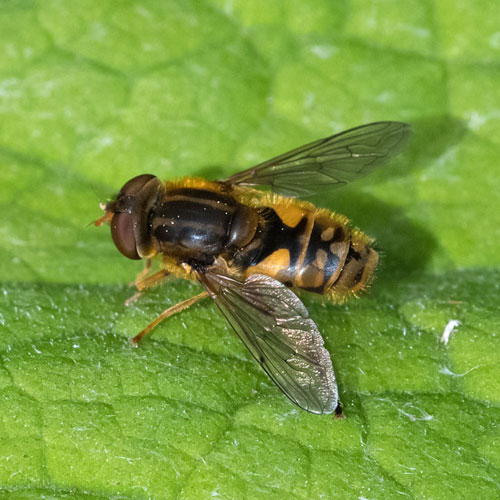 |
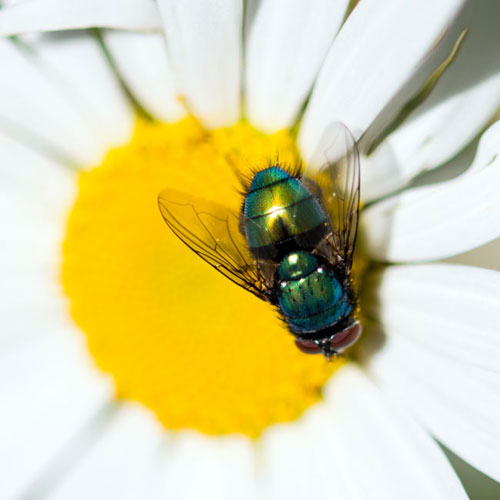 |
I also saw various beetles
on my visit. As I sat on my trusty 3-legged stool, resting by the banks
of the River Clyde, I caught sight of a Green Leaf Weevil creeping
amongst the foliage of Common Comfrey. These long-snouted insects dine
on leaves which makes them unwelcome to fruit farmers and gardeners. I
saw very large numbers of False-blister
Beetles
(also known as Pollen-feeding Beetles) on a wide variety of flowers. The
one below was on Dames Violet. Another commonly-seen group of beetles
are Soldier Beetles. I snapped the one below, Cantharis Rustica, on
Comfrey. Perhaps everyone’s favourite beetles are Ladybirds.
The
one I saw on Tuesday was not the usual red, but orange, the Water
Ladybird. As you might expect, it is usually found at the edges of
streams, rivers and ponds.
| Green
Leaf Weevil |
Beetle - Oedemera virescens |
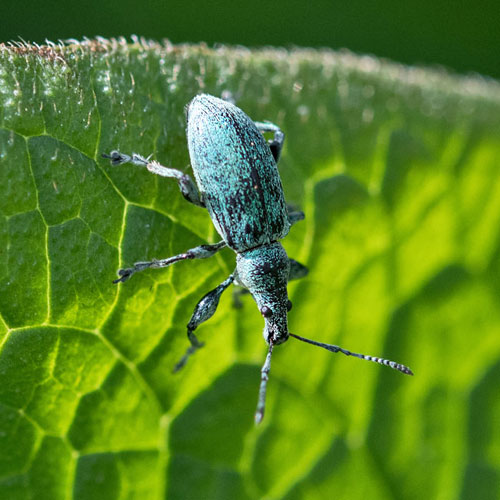 |
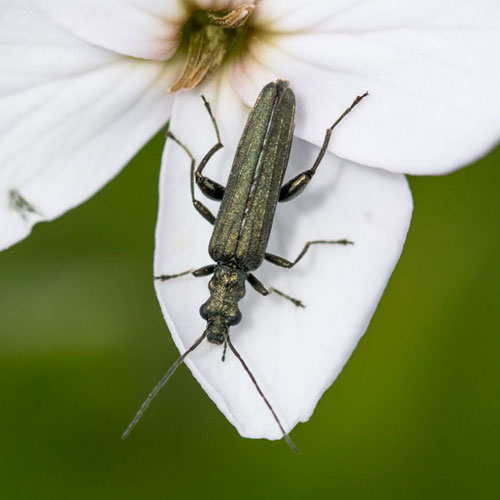 |
| Soldier beetle - Cantharis rustica |
Water
Ladybird |
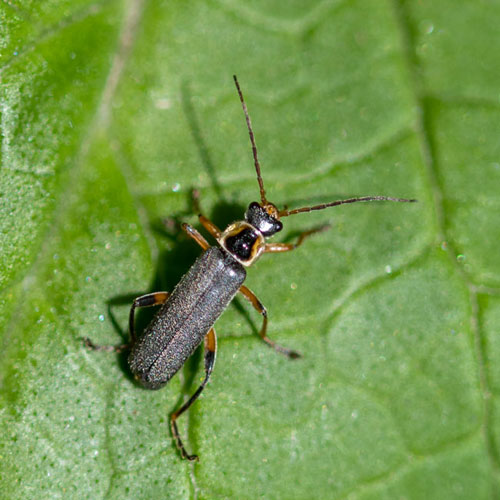 |
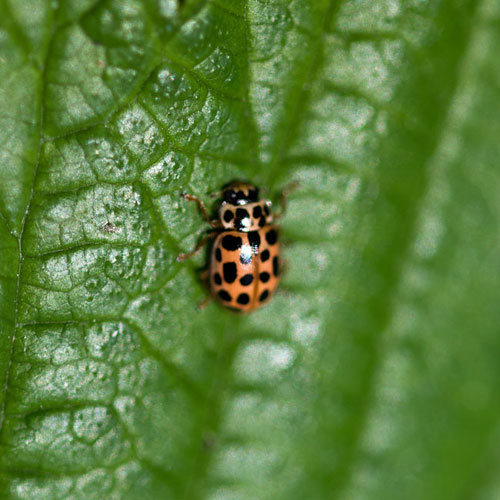 |
I hope you enjoyed hearing about my insect safari. It is a wee change
from my usual ramblings (pun intended).
Week ending: 24th May 2020:
Dalzell Estate, Barons Haugh
My fitness walks this week covered the beautiful area south-west of
Motherwell. Equipped with my Nikon D500 and Sigma 105 mm macro lens I
first explored the forested Dalzell Estate. The path took me down to the
River Clyde and into the wetlands of RSPB Barons Haugh. Both areas are
rich in plant and animal life. I was hoping to capture images of plants
and insects, and I wasn’t disappointed.
As I strolled through the Dalzell Estate, bright shafts of sunlight
illuminated patches of wildflowers growing between the trees. I noticed
tiny blue Germander Speedwell and as I stooped to photograph them I was
lucky to see a Beetle, Oedemera Virescens, on one of the blooms. In the
Chinese Garden I was impressed by the Pendulous
Sedge by the stream. On the overhanging tree
foliage I snapped, first a black hoverfly, Cordilura
Albitarsis , then the attractive greenbottle,
Lucilia Caesar.
| Female
Beetle - Oedemera virescens |
Pendulous
Sedge |
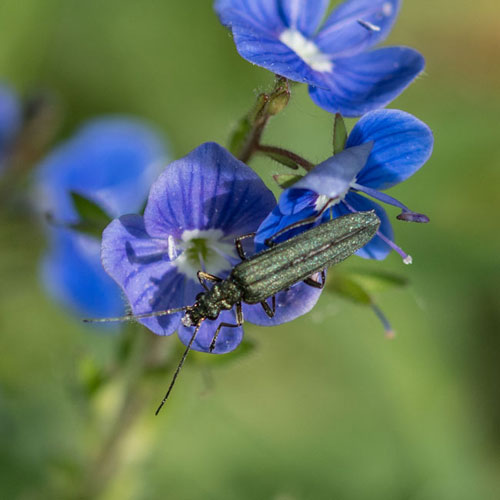
|
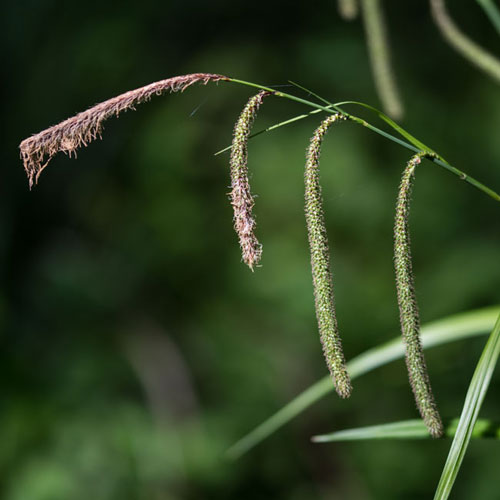 |
| Hoverfly - Cheilosia albitarsis |
Fly - Lucillia caesar |
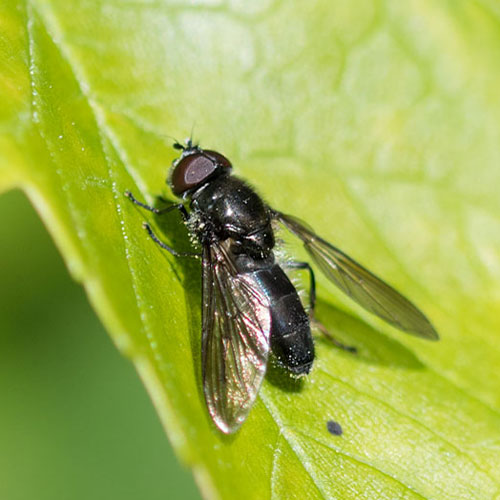 |
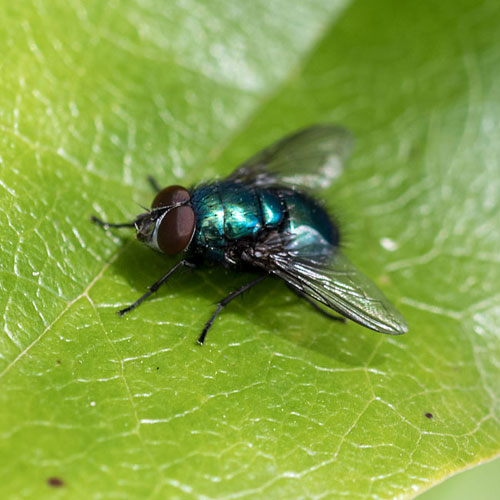 |
Many of the paths were lined with large areas of Ramsons, also known as
Wild Garlic. Also in bloom were Pink Rhododendrons, although many of
these were dug out a few years ago in an attempt to rid the environment
of what is regarded as an invasive
species.
| Ramsons |
Rhododendron |
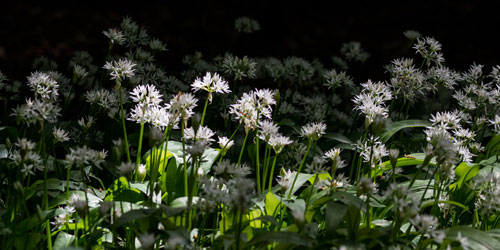 |
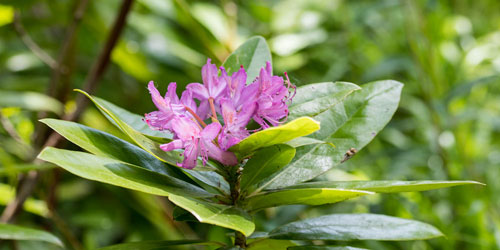 |
I captured a single Ramsons flower head that the light selected from
other shaded flowers. Similarly, I photographed a group of tiny Woodruff
flowers.
| Ramsons |
Woodruff |
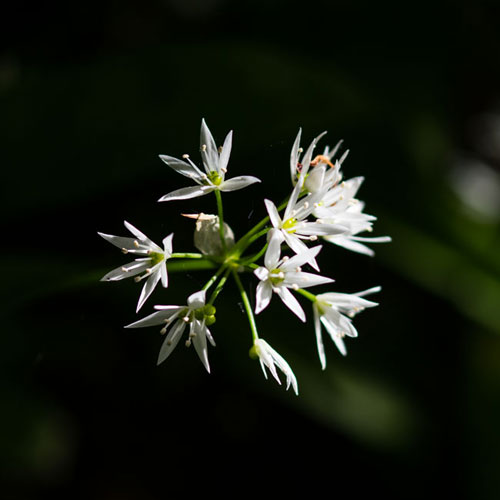 |
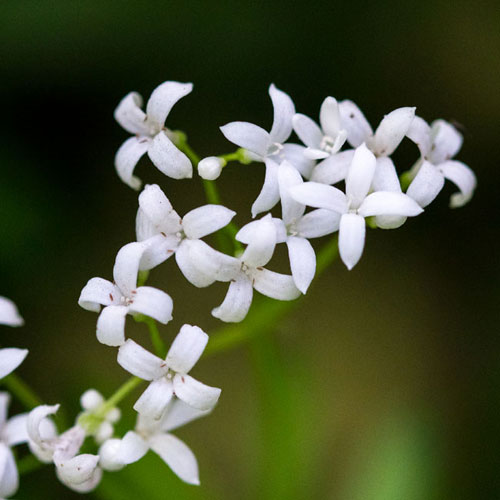 |
After a twenty minute walk I found myself walking along the much eroded
path along the River Clyde. In the grass verge I found a few white
flowers of Meadow
Saxifrage .
The path was lined in parts with Hawthorn bushes. These were
spectacularly covered in white bloom and their sweet scent hung in the
air. Insects were dining on the flowers, such as the hoverfly, Eristalsis
Arbustorum, and Empis
Tessellata ,
a Dagger fly, so-named due to their dagger-like mouthparts. Just before
I reached the gate into Barons Haugh Nature Reserve I came across a
nice isolated specimen of the umbilifer, Pignut, beside a tall tree.
This plant is most often surrounded by grasses and as such is difficult
to photograph.
| Meadow
Saxifrage |
Hoverfly - Eristalis arbustorum |
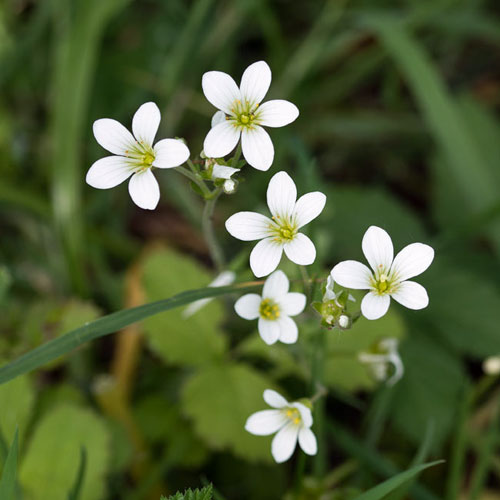 |
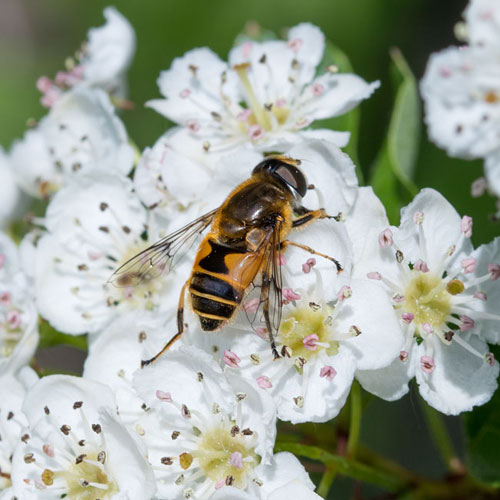 |
| Dance Fly - Empis tessellata |
Pignut |
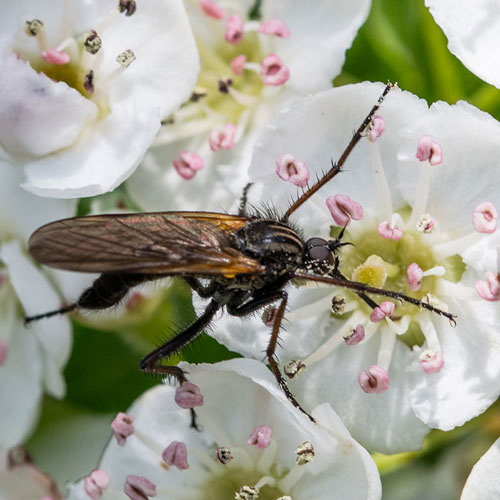 |
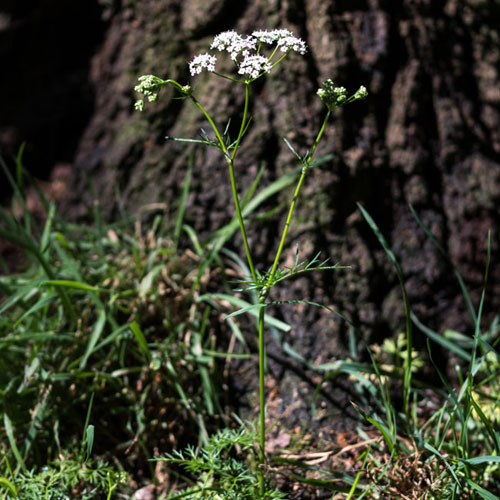 |
In the reserve I rested on a handily-placed bench overlooking the
Clyde. There were quite a few wildflowers in the area of the bench. I
snapped some Red Campion and one of the many fruiting Garden Strawberry
plants. Also within easy reach were some lovely yellow Wood
Avens and a couple of charming, seeding Dandelions.
| Red
Campion |
Garden
Strawberry |
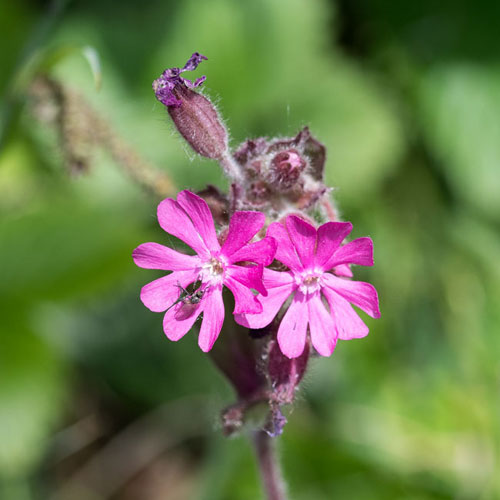 |
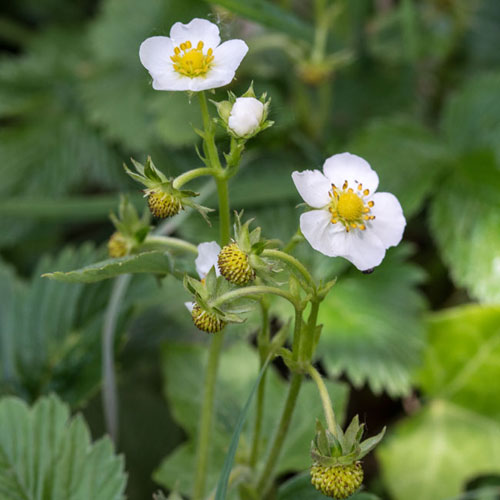 |
| Wood
Avens |
Dandelion |
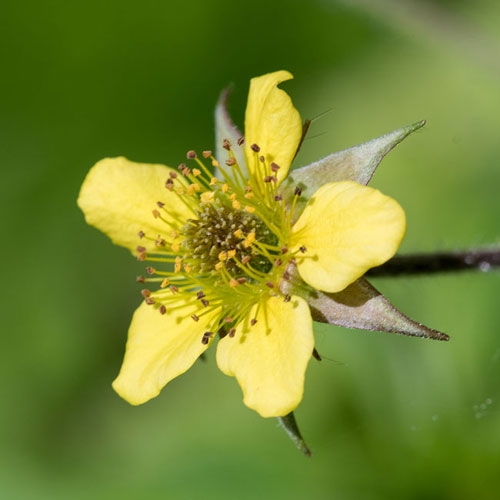 |
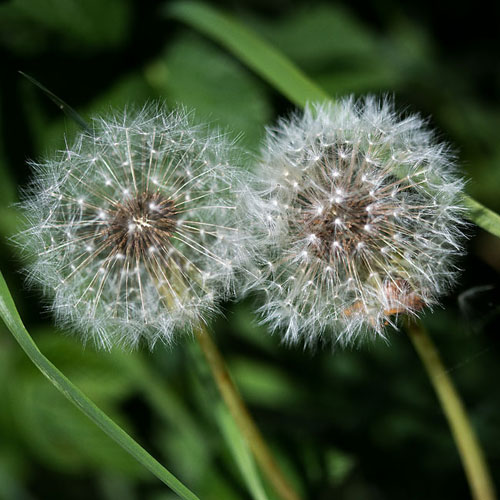 |
The path along the west side of the reserve was richly lined with a
wide variety of wildflowers. Prominent were the Greater
and Wood Stitchworts
whose genus name is Stellaria, meaning, appropriately,
“star-like”. Also there in great numbers were
Crosswort, a
member of the Bedstraw family. Each plant is a little tower of rings of
tiny yellow flowers, each a x-shaped cross. Along the grassy edge of the
path there were flowering Ribwort Plantain. These, like many so called
“weeds” are so widely seen that their beauty is
passed
over.
| Greater
Stitchwort |
Wood Stitchwort |
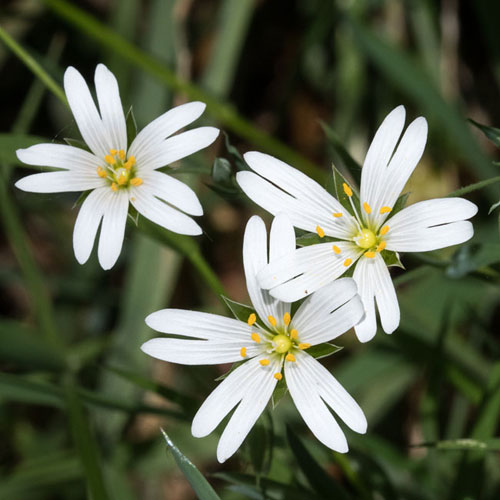 |
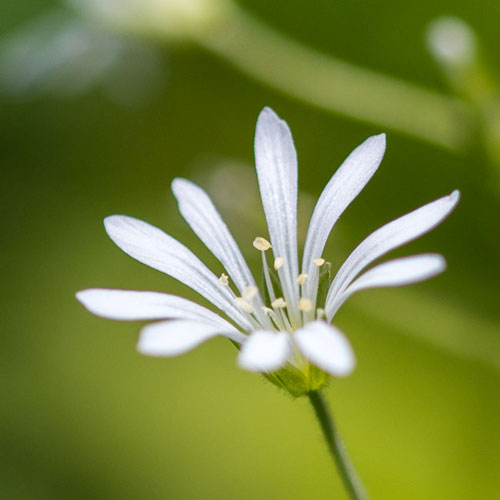 |
| Crosswort |
Ribwort
Plantain |
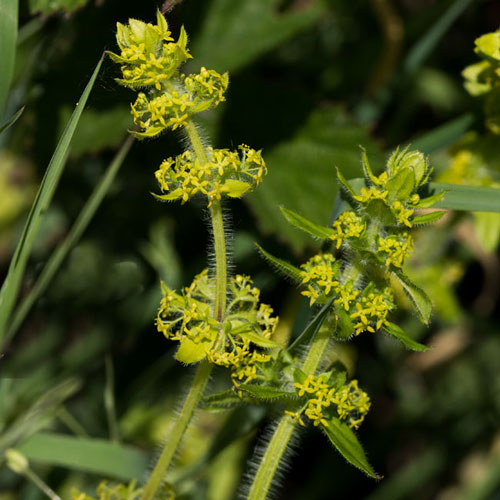 |
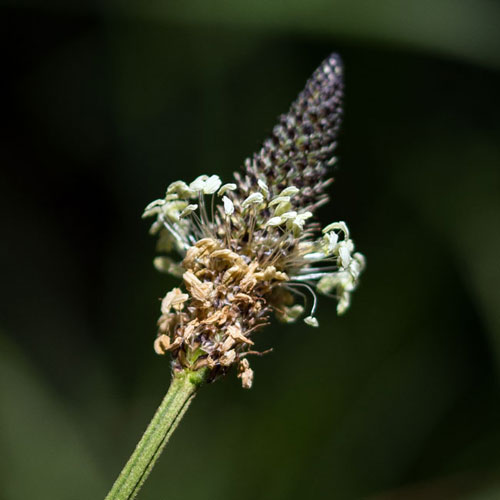 |
While resting by Clyde’s bonny banks I managed a shot of a
beautiful male Orange Tip butterfly as it fed on tall Dames Violet. I
also caught a few shots of the hoverfly, Cheilosia
Illustrata ,
despite its restless movements. I was delighted to come across a couple
of female Common Blue Damselflies. I’ve been wondering how the
eroding riverbanks would affect these delicate creatures. I usually see
more during May. A Peacock butterfly flirted past me and came to rest on
the gravel footpath (a hasty repair after the tarred path was taken by
the swollen river). The were fewer butterflies than in previous years.
For example, the Green-veined White, usually seen in large numbers, was
absent.
| Male Orange
Tip Butterfly |
Hoverfly - Cheilosia illustrata |
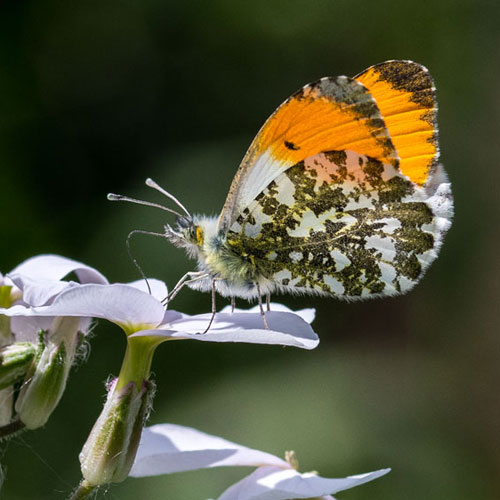 |
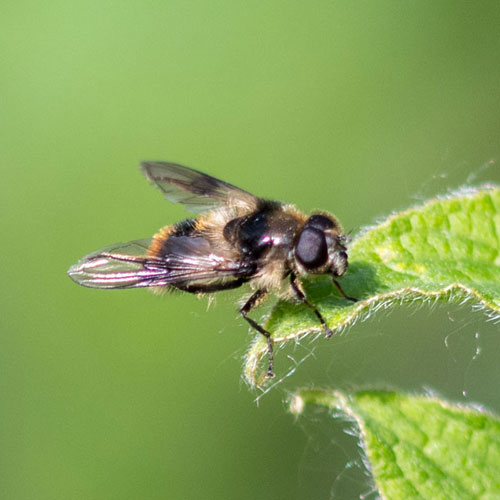 |
| Common
Blue Damselfly |
Peacock
Butterfly |
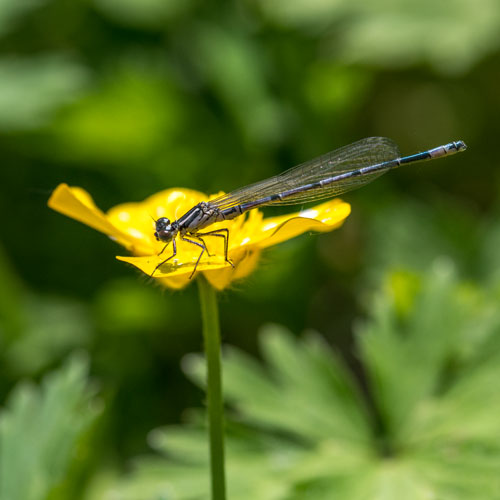 |
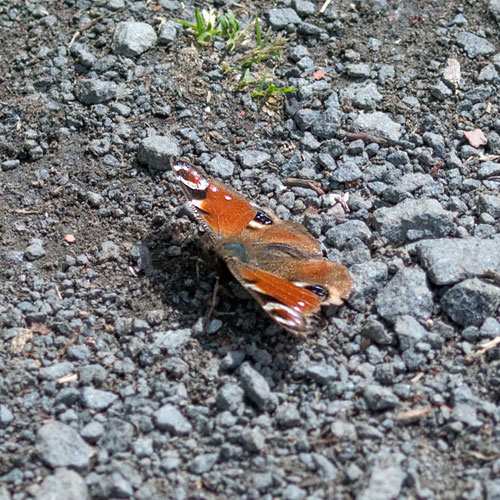 |
I climbed path up the slope towards the exit road and reached the
deserted reserve car park. I snapped a final few flower shots there of
freshly bloomed Dog Rose and yellow Broom. I also noticed a couple of
lovely yellow Welsh Poppies nodding in the breeze amongst some tall
grass. Another Swollen-thighed Beetle emerged from its nectaries and
seemed to pose as I photographed. My final shot was of an Oxeye Daisy
hosting a small moth.
| Dog
Rose |
Broom |
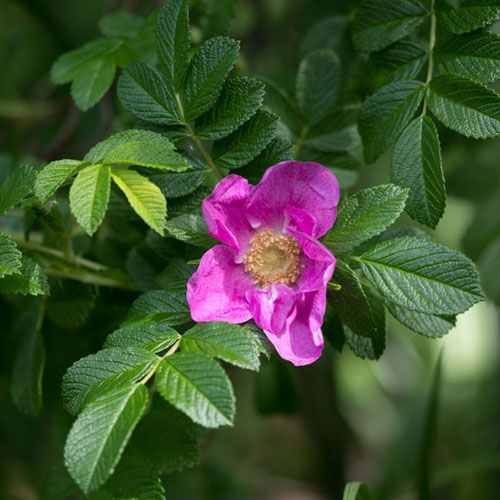 |
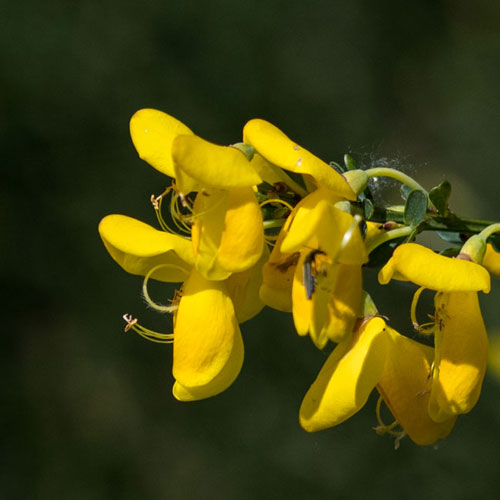 |
| Welsh
Poppy |
Oxeye
Daisy |
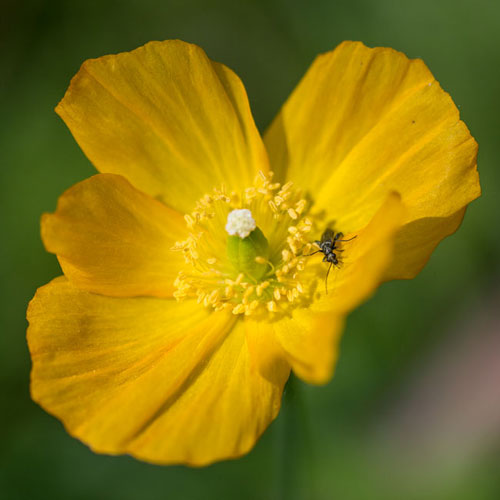 |
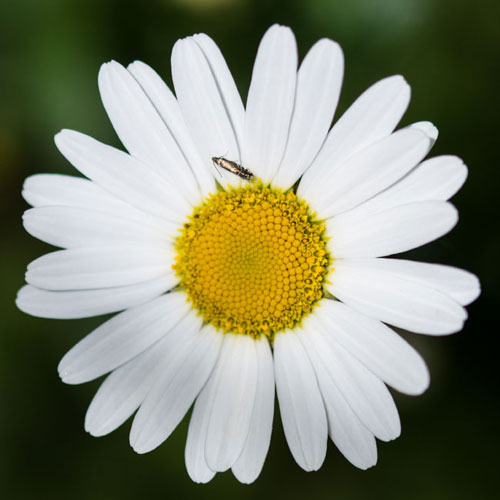 |
I enjoyed my brief walk in my local stomping ground. However, I
don’t usually confine my interest to just plants and insects,
but
I felt that photographing birds requires too much “hanging
around”. There were many more walkers than is normal, a
consequence of the lockdown, and stopping in the one place is not
conducive to social distancing. I therefore decided to leave my 600 mm
lens at home. Roll on stage 4.
Week ending 17th May 2020: Strathclyde Country
Park and Jim’s Garden
With the slight relaxation of the lockdown regulations to include more
time for exercising, I extended my walks to include a fair bit of Strathclyde Park. It was very refreshing to see Greylags,
with their goslings, well within the range of my macro lens.
I also snapped a Carrion Crow and Mute Swan that were perhaps pleased
to see humans with food. Where had we we been? A Mallard
pair paddled along the water’s edge, lead by a single
duckling dabbling near the pebbly bank.
| Carrion
Crow |
Mute
Swan |
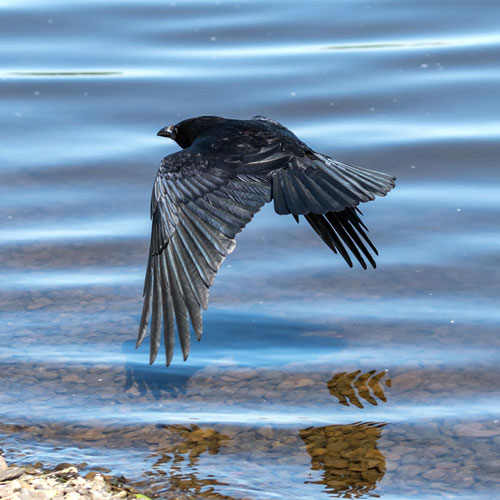 |
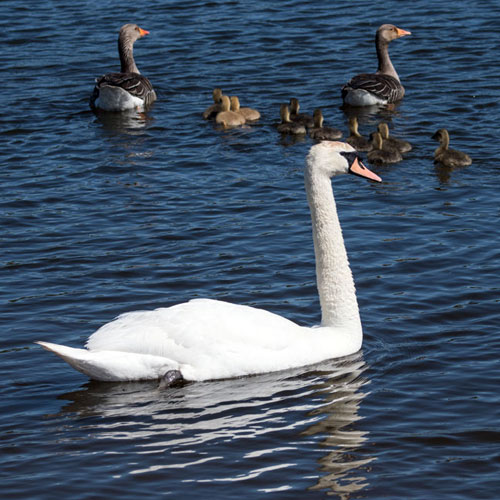 |
| Female
Mallard |
Mallard
Duckling |
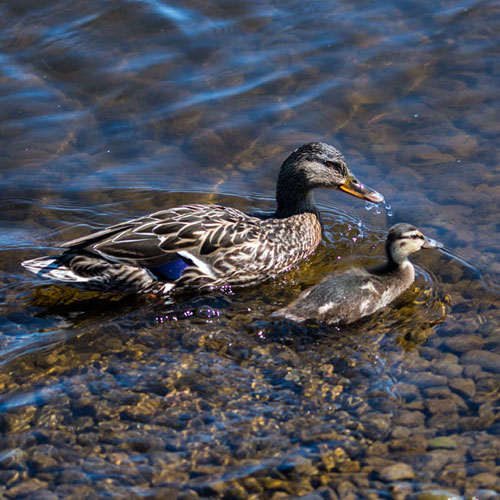 |
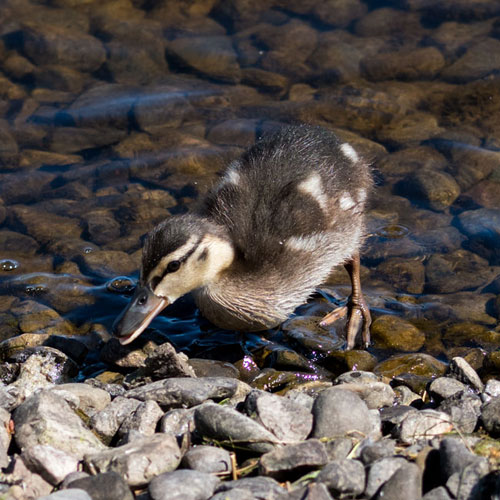 |
Back at my garden it was business as usual for the Sparrows and Blue
Tits getting on with nesting duties. These birds have been the main
“traffic” through the feeders, and the main reason I
need to
replenish the feeders daily.
I captured a bitter exchange between two Feral Pigeon cocks. No blood
was drawn but in was a violent struggle that ended with one bird flying
off to fight another day.
In midweek my neighbour decided it would be a good time to cut down the
trees in his garden. These were adjacent to my feeders and were home to
Woodpigeons, Blackbirds, Sparrows and Blue Tits. I’d have
preferred that he had not felled the trees, but my neighbour was within
his right to develop his garden. It’s a pity though that he
didn’t wait a few weeks until nesting was over.
With fewer places now to perch, more birds have been appearing on my
fence top. This makes it easier for me to get fairly close pictures,
usually in good light.
| Female
Blackbird |
Magpie |
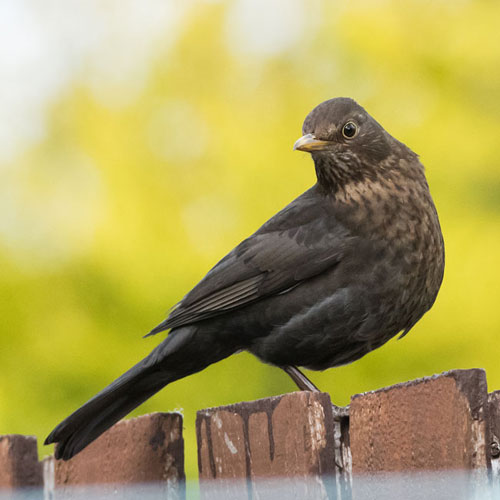 |
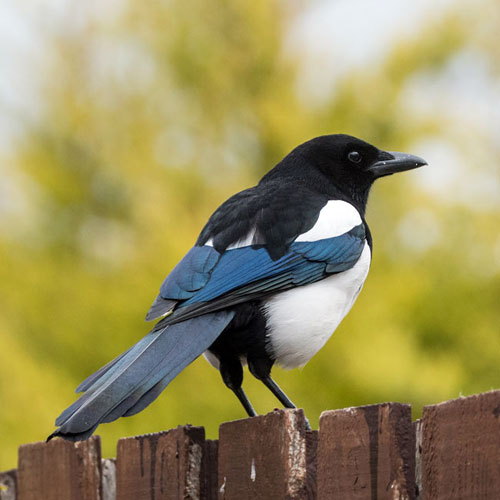 |
| Wood Pigeon |
Feral Pigeon |
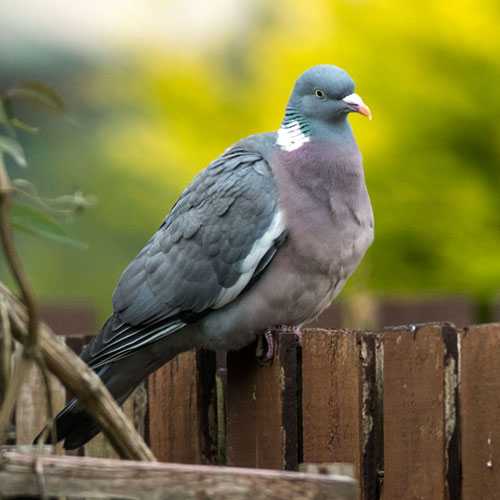 |
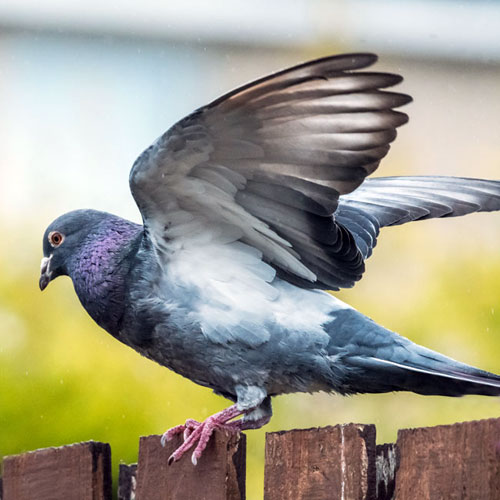 |
Sunday’s weather was dreich
but I did managed a few interesting shots. The Sparrowhawk
is still a daily presence over the estate. I got a reasonable shot
albeit in poor light. I think I also have seen a Kestrel hovering
150m to the east. It may have been the Sparrowhawk, but I
don’t think they usually hover.
| Sparrowhawk |
Kestrel |
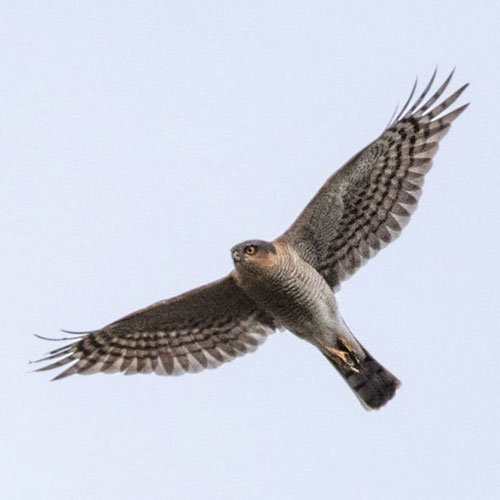 |
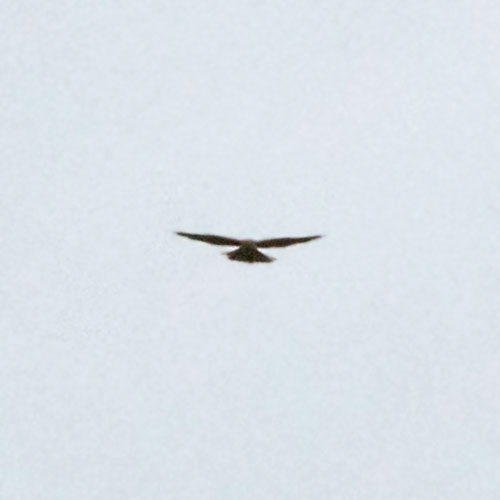 |
Some
Jackdaws
have been taking their lead from last week’s marauding Magpie
by
raiding the fatball feeder. Being slightly smaller birds, they were
rather more successful than their big cousin. The Starlings,
too, were frequently seen at the fatballs.
| Jackdaw |
Starling |
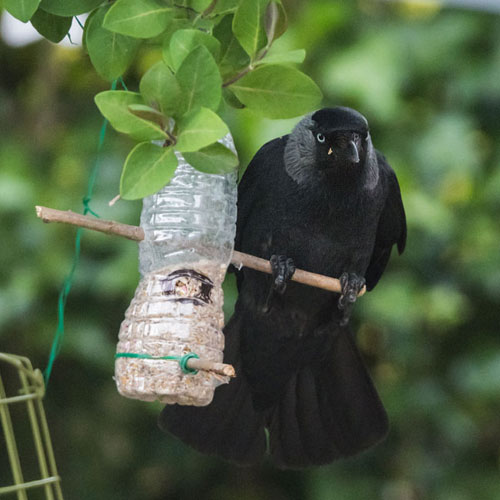 |
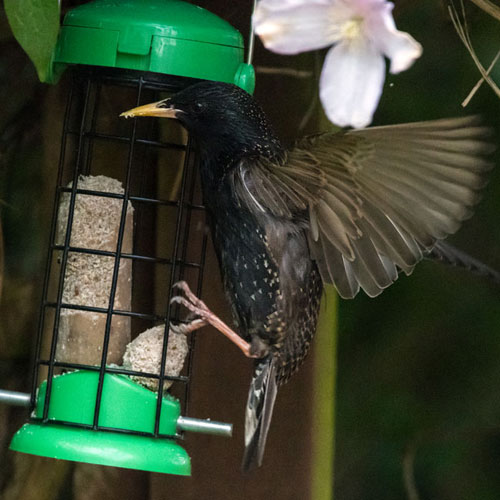 |
The absence of trees has allowed the Lesser Black-backed Gulls to pass
closer to my house. I was pleased to see a Great
Tit at the feeders.
| Lesser Black_backed Gull |
Great Tit |
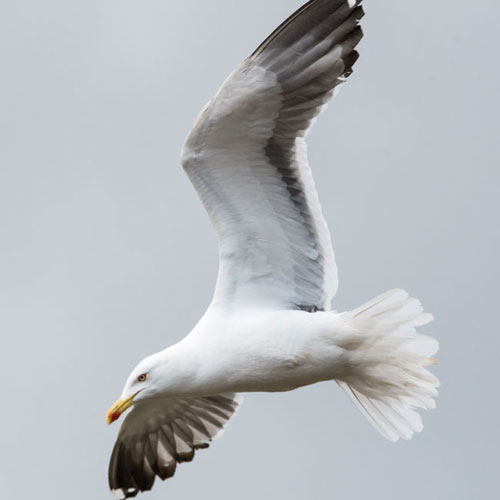 |
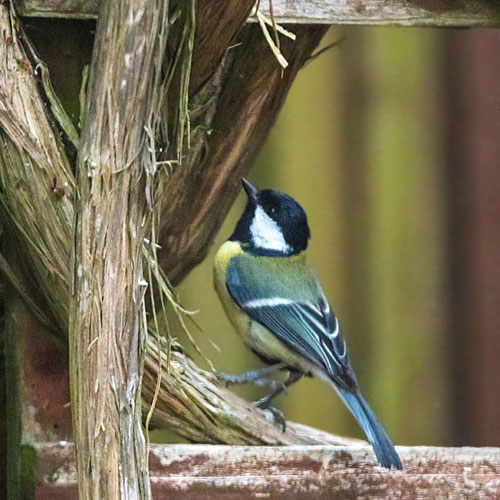 |
I probably will be able to photograph more flying birds now that the
tress are gone. Also, I wonder if I’ll get different Tits and
Finches now that the feeders are more visible to passing birds.
Let’shope
Week ending 10th May 2020: In and around Jim’s Garden, Week 7
The Lockdown continues, but so does the good weather. I dislike taking
pictures in grey conditions, so I’ve been enjoying my
extended
study of the nature on my doorstep. I caught a couple of House Sparrows
getting frisky on the palings. Later, some House Sparrows began
bringing bread from my neighbour’s garden into my garden,
presumably to get peace to eat it. It didn’t work as the
Starlings followed them and stole the bread anyway. Bonny birds
Starlings.
The Blue Tits were showing less well this week. I wonder if there were
just too many Sparrows and Starlings for them.
The Magpies were attracted by the fatball feeder. They
couldn’t
quite get a steady grip of the feeder and sort of hovered in the tight
space while pecking frantically at the food. It looked hard work for
not much reward, and they ended up with a greasy face and bill.
The Pigeons were hanging about on my roof, swooping down beneath the
feeders to catch the spillages from the smaller birds feeding.
| Wood
Pigeon |
Feral
Pigeon |
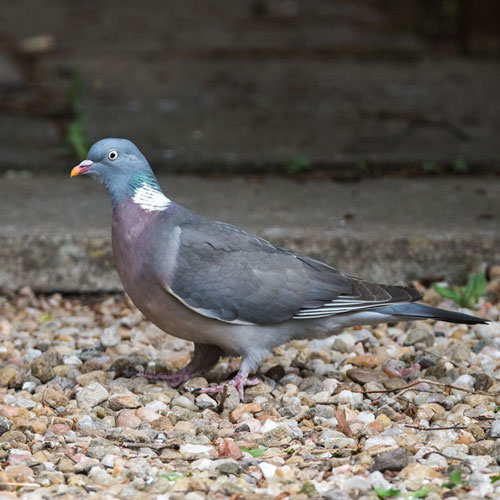 |
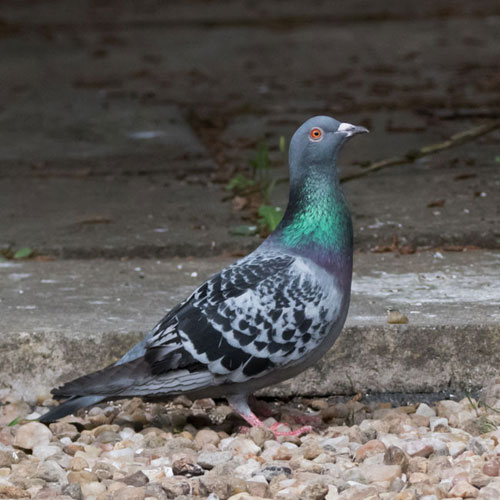 |
After a few weeks’ absence the Robin turned up for some
sunflower
hearts. Always nice to see him. I also caught a record shot of a
Sparrowhawk circling high overhead. It’s yet to descend to
anywhere close enough for a better shot, but I think it’s
only a
matter of time.
| Robin |
Sparrowhawk |
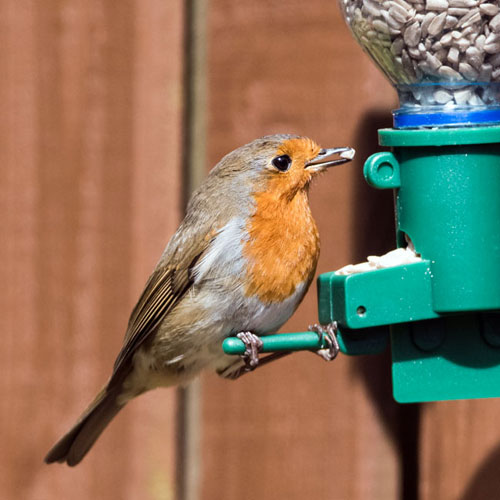 |
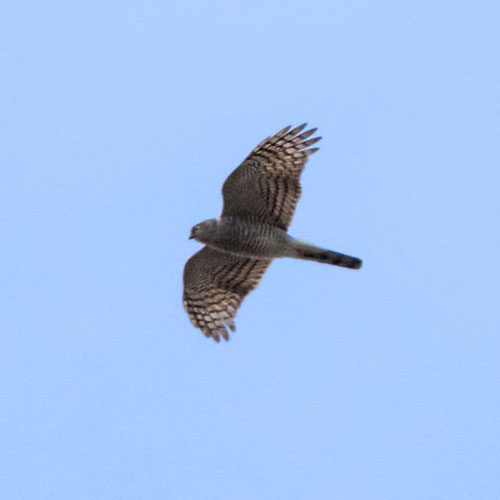 |
I’ve been I’ve been getting further practice in
using my
new macro lens, the Sigma 105mm. I got some nice photos of Wall
Speedwell at the side of my garage. The tiny blue flowers are about a
millimetre across!
I’ve also seen this week, on my daily exercise walks, Greater
Stitchwort. Many wildflowers have names ending in “wort” ,
particularly ones that had medicinal uses, which apparently derives
from Old English for “plant” or
“root”.
Stitchwort was once a herbal remedy for runners stitch (the pain in the
side sometimes experienced during a long run). Their loverly flowers are
like bright stars, indeed their scientific name is Stellaria, meaning
“star”. I also saw, Crosswort, a plant consists of
a column
of tiny yellow crosses. It was once used
for rupture, rheumatism and dropsy. Not a “wort”,
but
lovely nonetheless, are Water Avens, a lovely, drooping wildflower, seen
near the other herbal-interesting flowers, Dandelion
and Field
Speedwell.
On another walk I noticed quite a few Orange-tip
butterflies.
They fairly shift around, only occasionally resting on a flower for a
quick feed. I got a few shots of a mating pair. The male performed
impressive aerial acrobatics in completing the process before whizzing
off in the wind.
I watched a pair of White-tailed
Bumblebees using their aerial
skills to navigate their way about yellow Comfrey
flowers.
They’d been working hard as their pollen baskets were bulging.
It’s certain the Lockdown will go on for a few weeks yet and
I
will keep watching in and around by garden, trying to catch interesting
photographs to bring to you each week. Never a dull moment.
2nd - 3rd May 2020: In and around Jim’s Garden, Week 6
It’s been
another week of kind
weather. The birds are notably more frantic, more quarrelsome around
the feeders, especially the House Sparrows. With more mouths to feed,
it’s every bird for itself.
Starlings have been
muscling their
way onto the fatball feeder, easily displacing the puny Sparrows.
They’ll be even more of a threat in the next week or two when
they’re joined by their fledglings to form raiding parties -
if
last year is anything to go by.
The Magpies have been
checking out
the feeder area. I witnessed (but sadly didn’t get a picture)
a
Magpie gobbling up a small pile of spilled oats and then, when he
wanted more, flew up crashing into a feeder to release more food. Smart
birds.
The Blue Tits have been
getting their
share. Their tactic is to wait patiently for an opportune moment before
nipping speedily onto the sunflower/suet mix feeder to pinch a pellet or
two to eat on the tree branches above. Occasionally they get chased by
an outraged Sparrow, but usually the Tits are too fast for them.
Below the feeders
we’ve had regular visits from the Feral Pigeons and the
occasional Blackbird.
| Feral
Pigeon |
Female Blackbird |
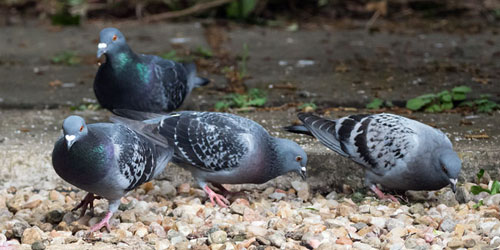 |
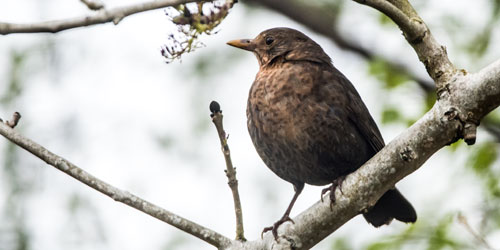 |
Overhead, I’ve
caught shots of
Jackdaw, Magpie, Feral Pigeons and, of course, the big boys, the Lesser
Black-backed Gulls, each ready to move in when the opportunity arises.
I’ve been a bit disappointed that the fledglings
haven’t
shown yet, nor are there any new birds turning up, such as the Gold-
and Greenfinches that I’ve heard nearby. Indeed some of my
previous sightings, e.g. the Robin and Coal Tit, haven’t
shown
since the second week of lockdown. I remain hopeful. I have Niger seed
but no feeder, so I might see about getting one to maybe entice them in.
| Jackdaw |
Magpie |
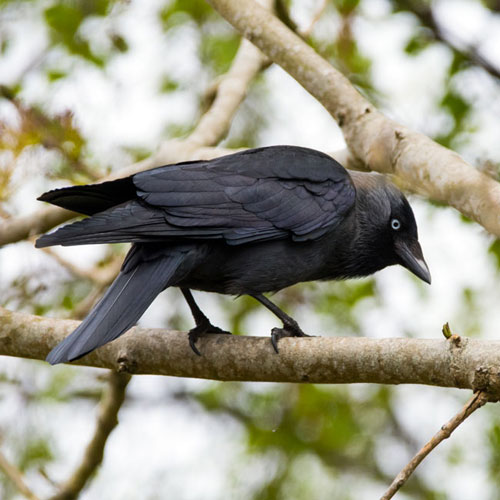 |
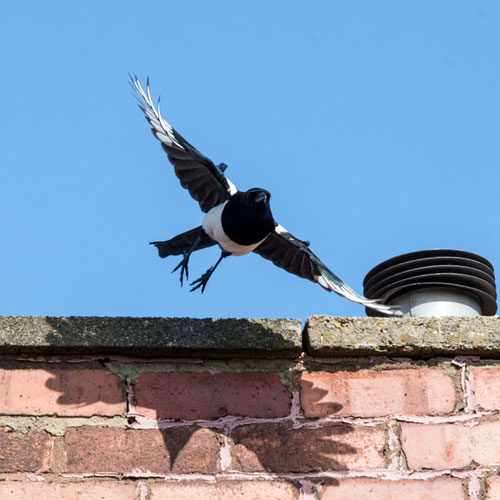 |
| Feral
Pigeon |
Lesser
Black - backed Gull |
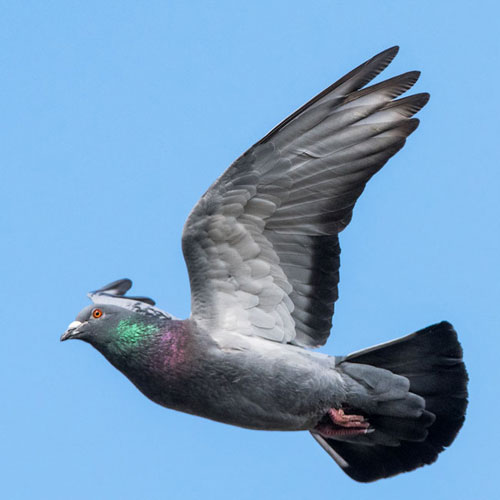 |
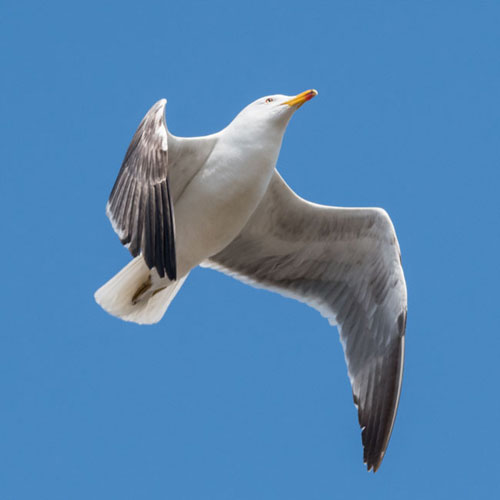 |
I have purchased a Macro
lens, the Sigma
105mm,
so my main weekend activity was touring the garden, learning how to get
the best from it. Some of the results are shown below. My first success was
getting some nice shots of the blow fly,
Lucilia Caesar, common name, appropriately, the Greenbottle.
Next I was a bit surprised to find the Hoverfly Eristalsis
Arborustrum
in my garden. I can’t remember seeing one before. I have
always
been aware of the tiny Black Garden Ants though. One year I had to take
action when they threatened to overrun the place. They’re
always
on the move, so after getting to grips with camera settings, I snapped
a few on a large plant pot, along side even tinier creatures, Chrysanthemum
Aphids.
Apparently the Ants and Aphids have a bit of a deal going - the Ants
protect the Aphids from predators and the Aphids produce food for the
Ants. It’s termed “symbiosis”.
| Fly - Lucilia caesar |
Hoverfly - Eristalsis arborustrum |
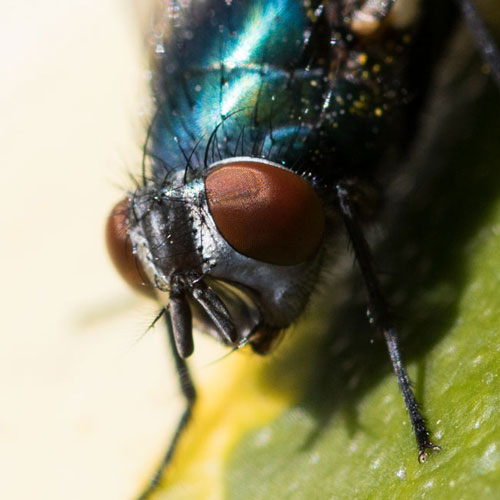 |
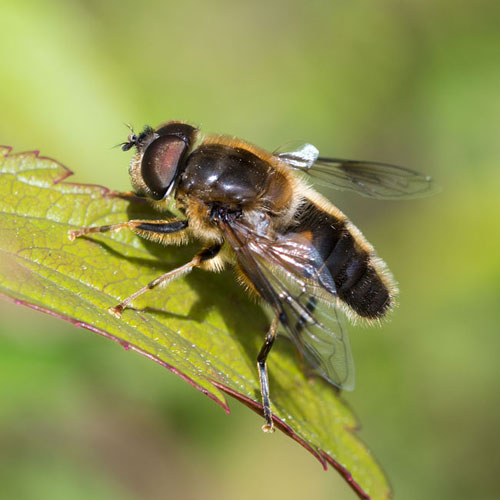 |
| Black
Garden Ant |
Chrysanthemum
Aphid |
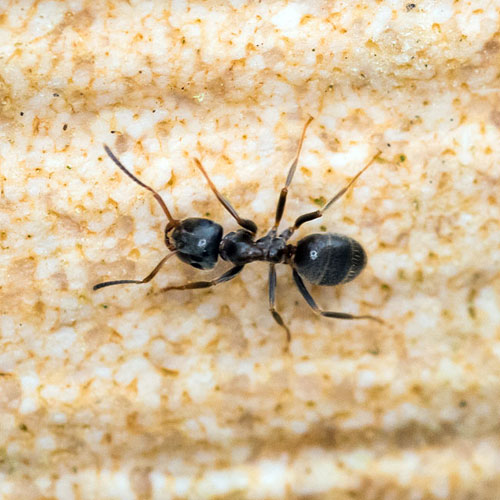 |
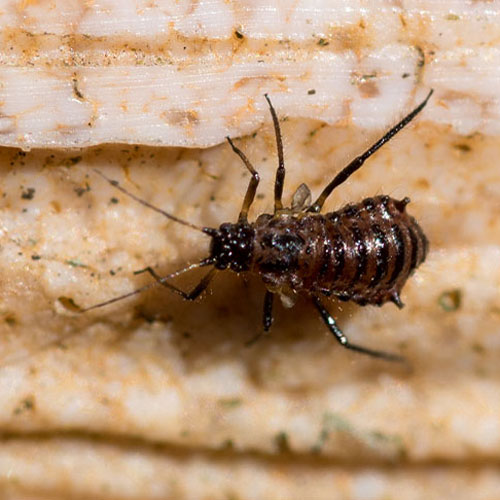 |
On
my Rowan tree I came across another Aphid, the Sycamore
Aphid, known to gardeners as the Greenfly. On the same tree I
was delighted to find a wee favourite insect of mine, the hoverfly, Syrphus
Ribesii.
Its black and yellow bands and golden back are very pleasing to the
eye. My small Rhododendron bush has started to bloom, attracting a few
Bumblebees. Again I laboured for a bit, perfecting my “moving
subject” technique, but eventually I managed a few acceptable
shots of a Tree Bumblebee and Early Bumblebee.
| Sycamore Aphid |
Hoverfly - Syrphus ribesii |
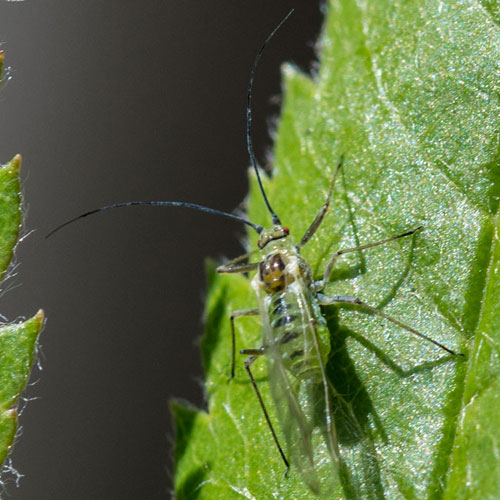 |
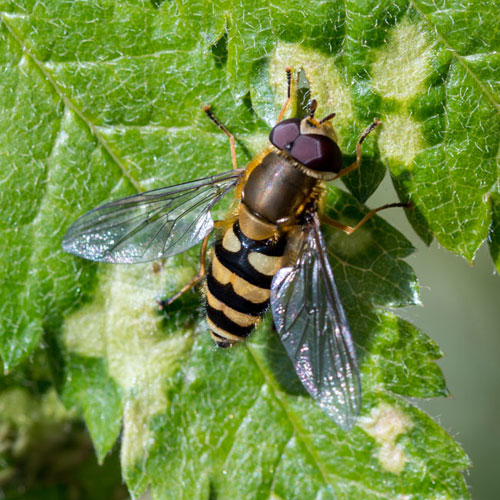 |
| Tree
Bumblebee |
Early
Bumblebee |
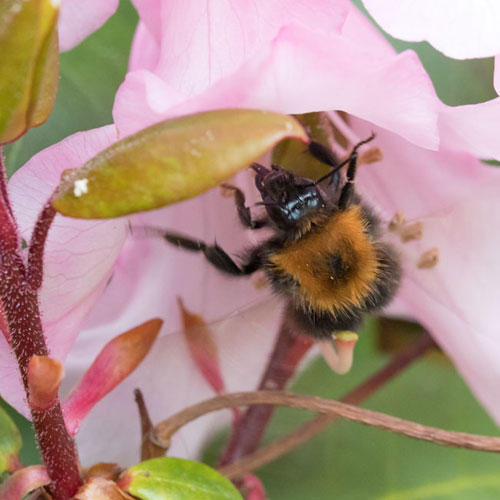 |
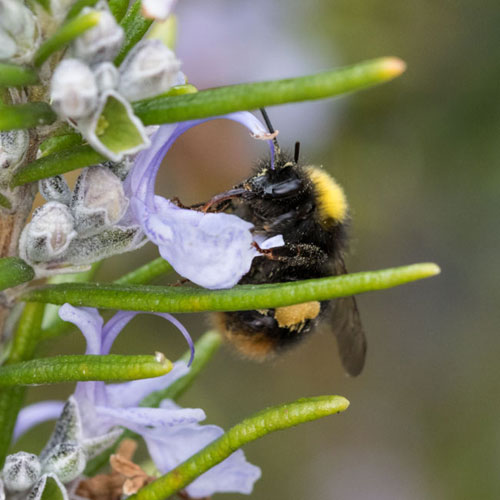 |
I also got some closeups
of flowers.
They’re easier to photograph than insects, but, due to the
small
depth of focus in the photographs, and a lack of familiarity with
seeing at such a small scale, more consideration of composition is
needed. The Bluebells, Clematis and Rosemary flowers made nice subjects
to start on.
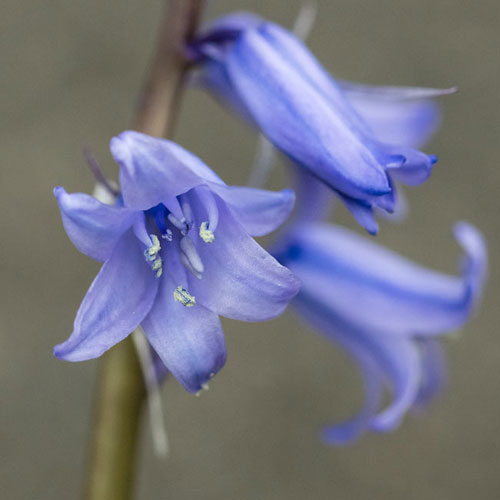 |
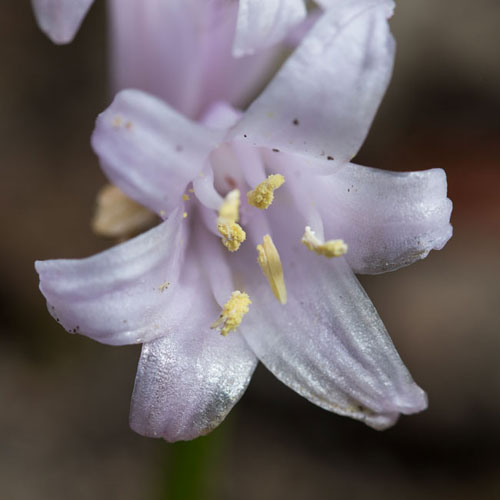 |
| Mountain
Clematis |
Rosemary |
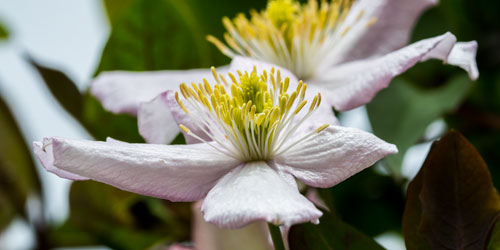 |
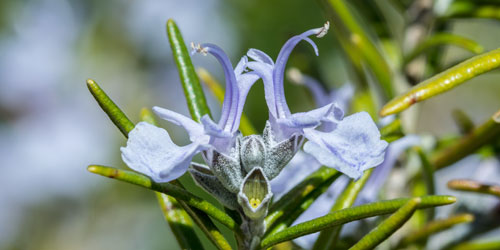 |
Lockdown is likely to go
on for a few
weeks more. Watching nature in and around my garden isn’t so
bad.
However, I do miss getting out and about, and I am missing my weekly
breakfasts.
Highlights - May 2020
We present last
month’s gallery
of my favourite pictures I’ve taken during May They are not
listed in the order they have been taken, but according to a series of
themes. I’ve kept commentary to a minimum, preferring to let
each
picture talk for itself.
BLUE TIT
FROLICS
ASSORTED INSECTS
| Caddisfly |
Cluster
Fly |
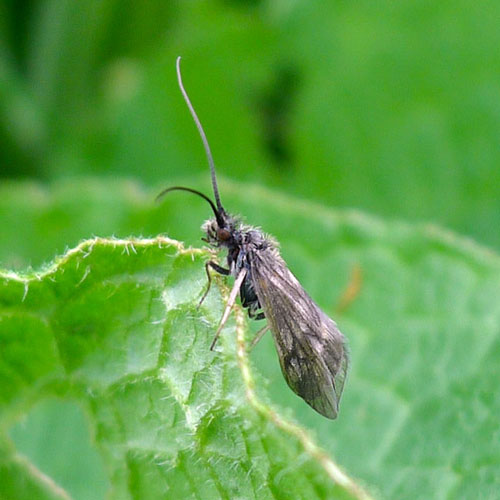 |
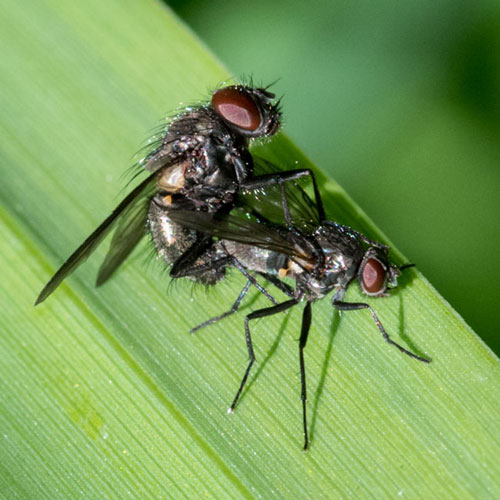 |
| Common
Carder Bumblebee |
Common
Wasp |
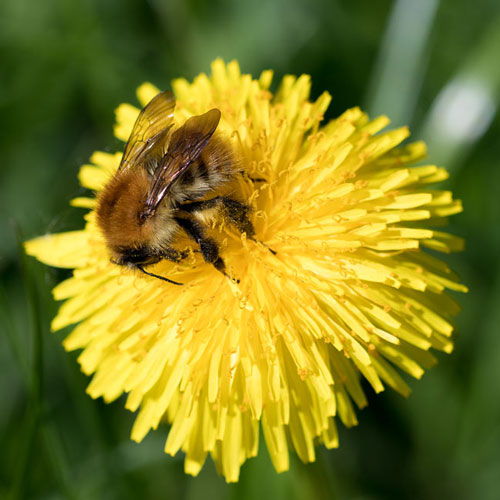 |
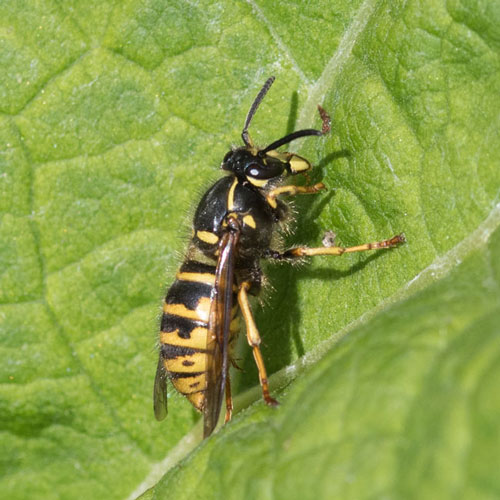 |
A VARIETY OF FERAL
PIGEONS
SOME NICE
FLOWERS
| Common Daisy |
Cuckoo Flower |
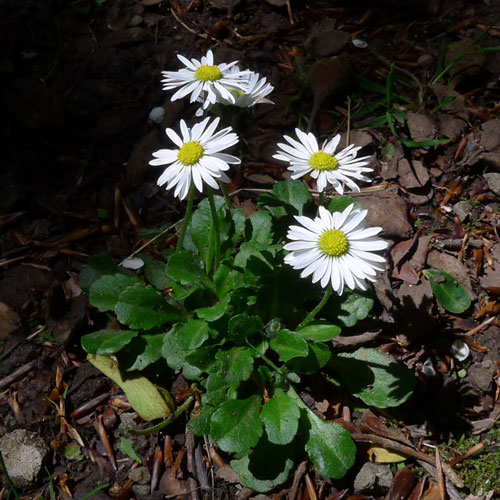 |
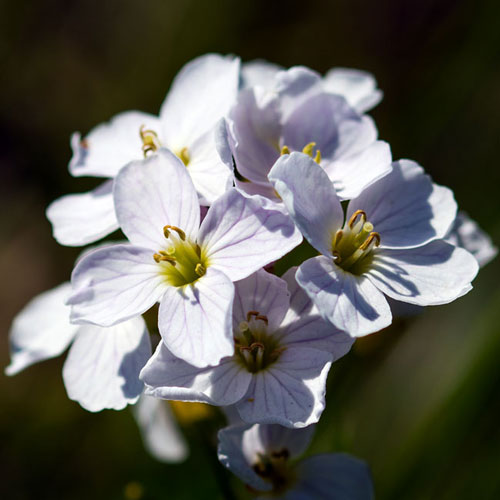
|
| Hawthorn |
Herb Robert |
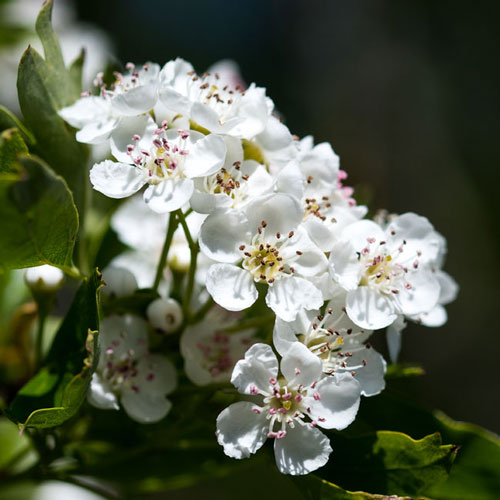 |
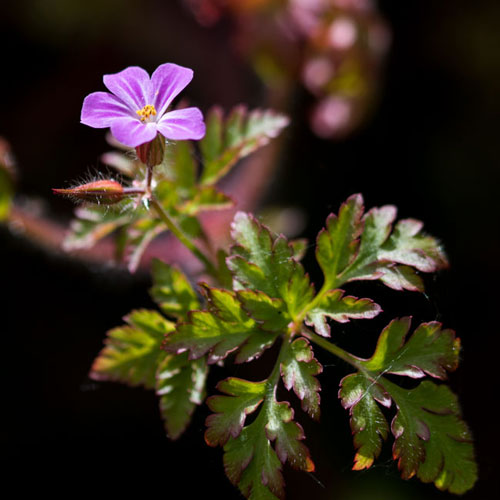 |
| Horse Chestnut |
Pignut |
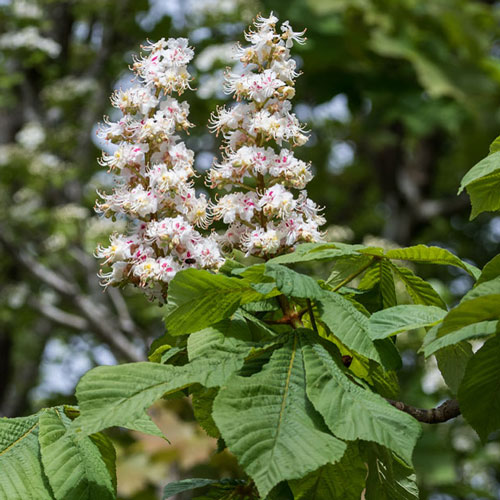 |
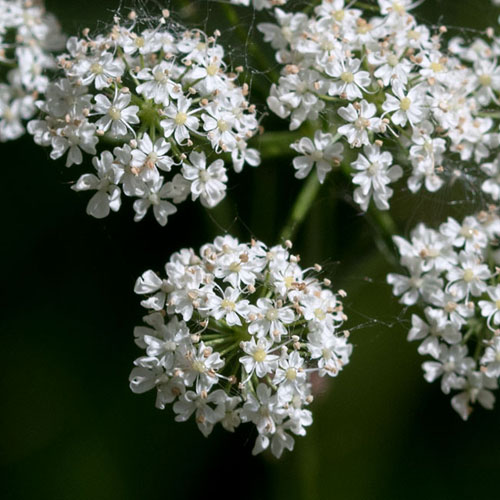 |
| Ramsons |
Wood Avens |
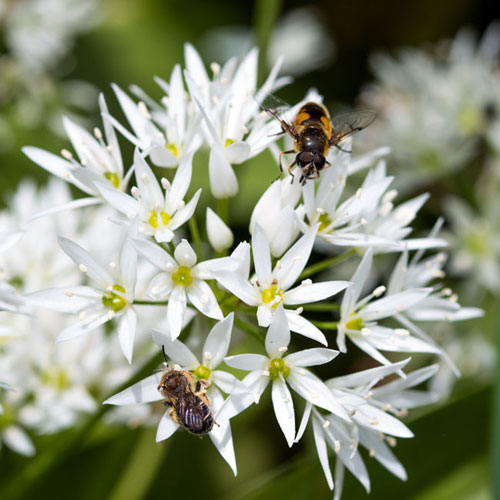 |
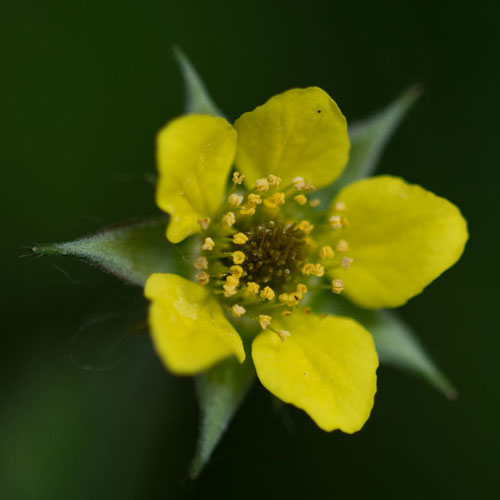 |
WEE SPARROWS
BUTTERFLIES
| Peacock
Butterfly |
Green - veined White Butterfly |
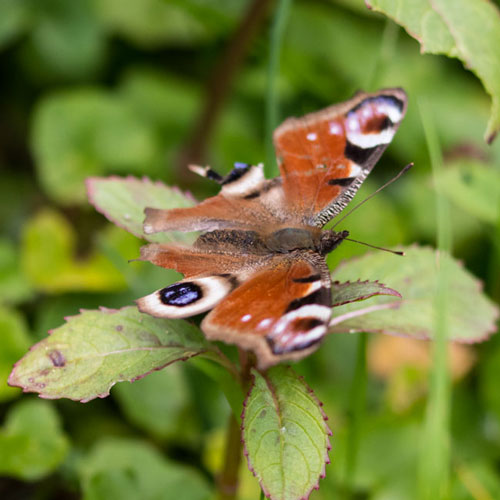 |
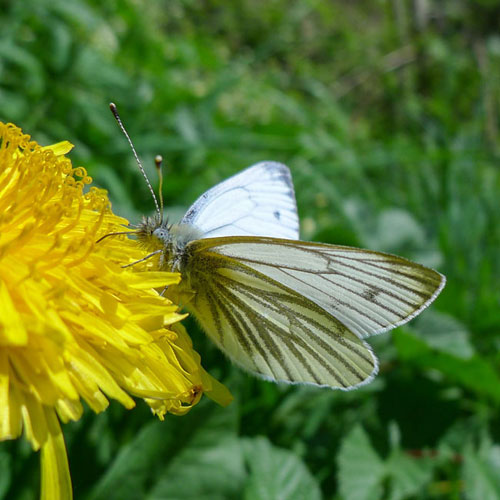 |
STUKKIES
(Starlings)
MORE INSECTS
| Stiletto Fly |
Hoverfly - Rhingia campestris |
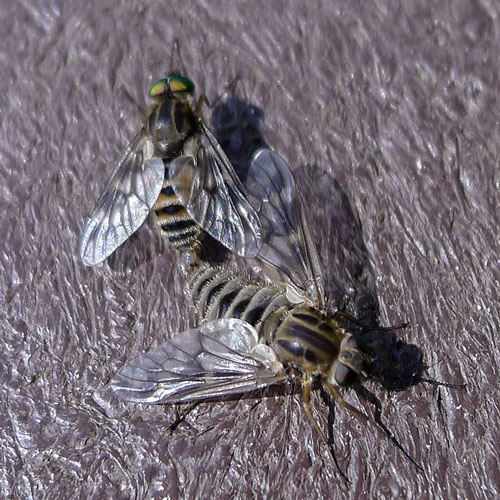 |
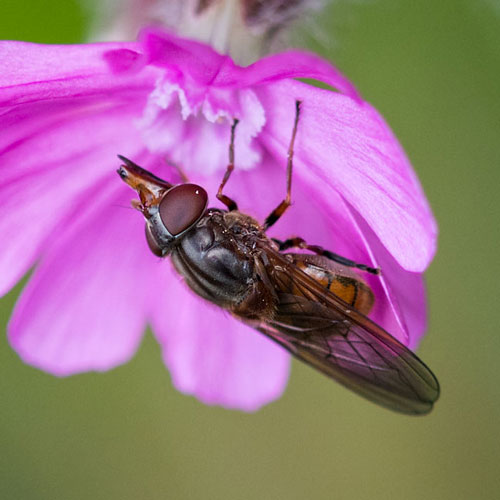 |
| Cranefly - Ptychoptera albimana |
Sun Beetle |
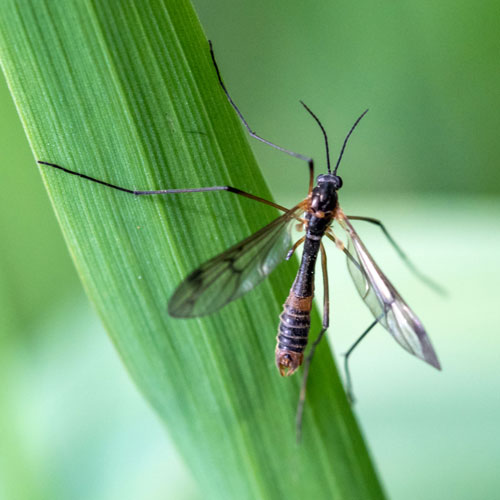 |
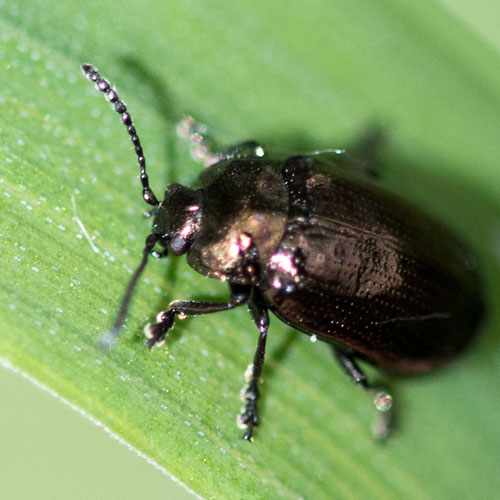 |
| Water Ladybird |
Hoverfly - Dasysyrphus venustu |
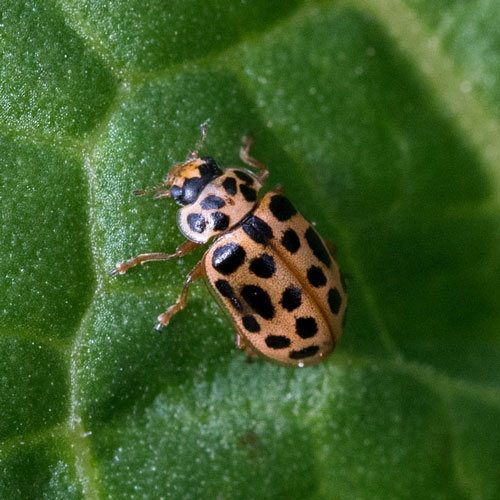 |
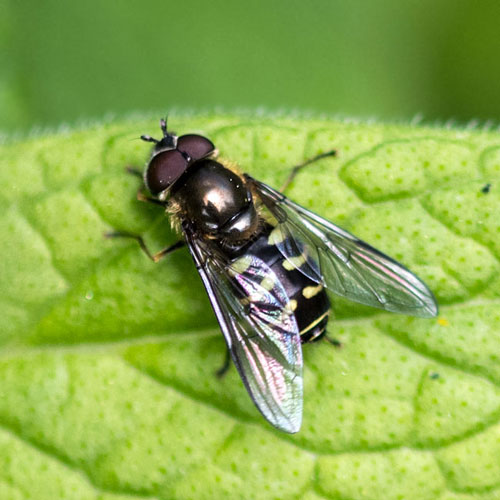 |
| Large Dark Olive Mayfly |
Large
Red Damselfly |
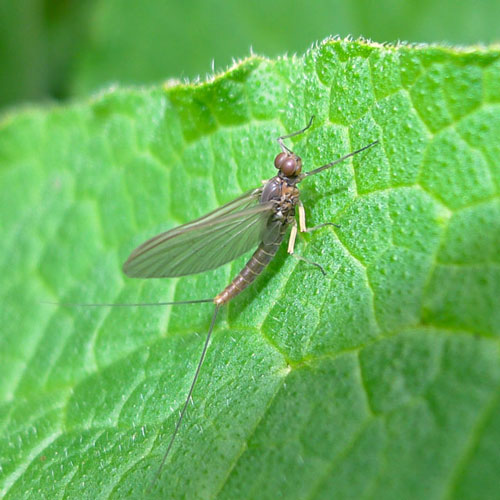 |
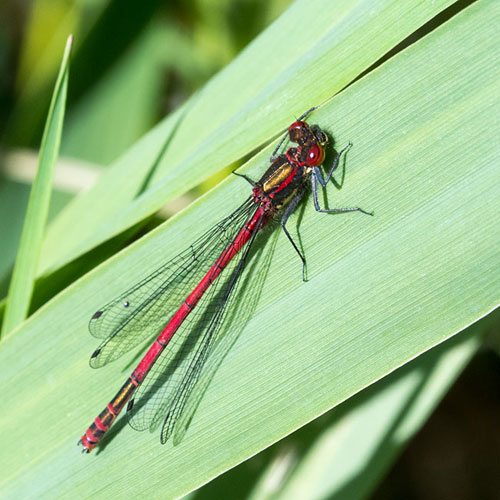 |
Back To Top
|

